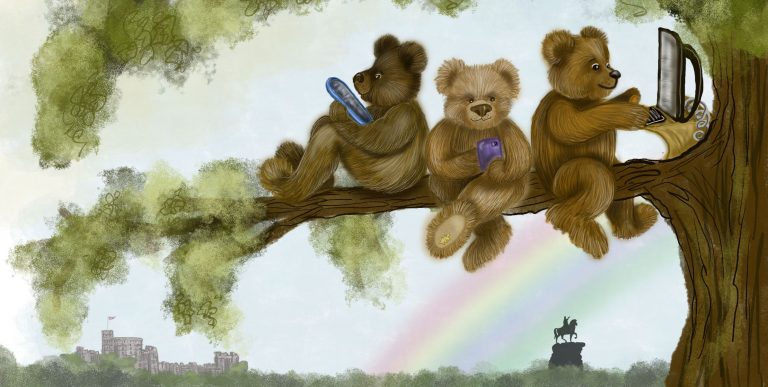Billy Bear Activity Sheets
The Billy Bears are very bashful bears, and you will be lucky if you ever manage to see one in their natural environment!
Their homes are hidden in the upper branches of the Oak Trees of Windsor Great Park and Forest.
However, if you are pure of heart and have a kind and generous attitude to life, it is not impossible to find them and then you will discover that The Billy Bears are your forever friends! You just need to learn to read the signs so we have some activities here that may help to lead you to them, and along the way hopefully learn a little more about the trees and natural world that give The Billy Bears their home.
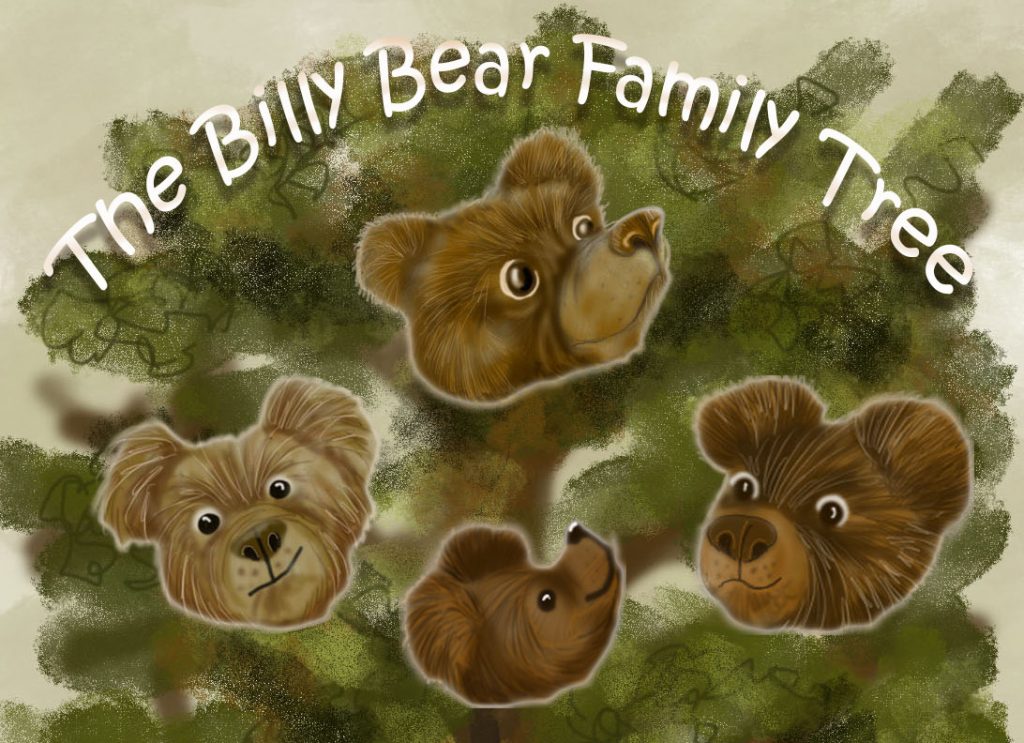
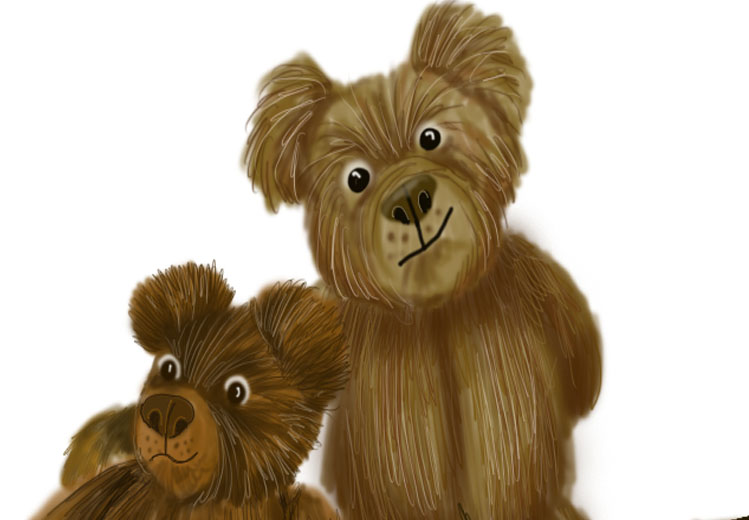
How to Spot
The Billy Bears
(and some ideas on what to do whilst you're looking!)

Spot the Difference
In most woodlands, there are two basic types of trees – Deciduous and Coniferous. The Deciduous trees are rounder in shape and shed their leaves in the autumn, so that their branches are bare in the Winter. The Coniferous trees are more upright in shape, and have small, needle like leaves which stay with them through the winter, so Coniferous trees are often called ‘evergreens’.
How many Deciduous and Coniferous trees can you spot when you’re out on your walk?
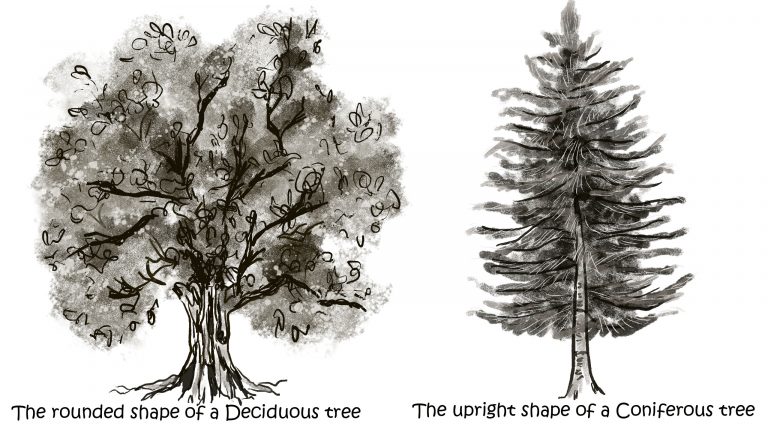
Have you ever thought about ‘Adopting’ a tree near your home and following its fortunes through the years?
Keep a record of its height and girth, collect some of its leaves and seeds and press them between the pages of a heavy book, and take pictures or make sketches through the seasons. This way in years to come you will have a keepsake record of ‘your’ tree and how it grew with you into the future.
How to measure the height of a Tree (...it's a two Bear job!)
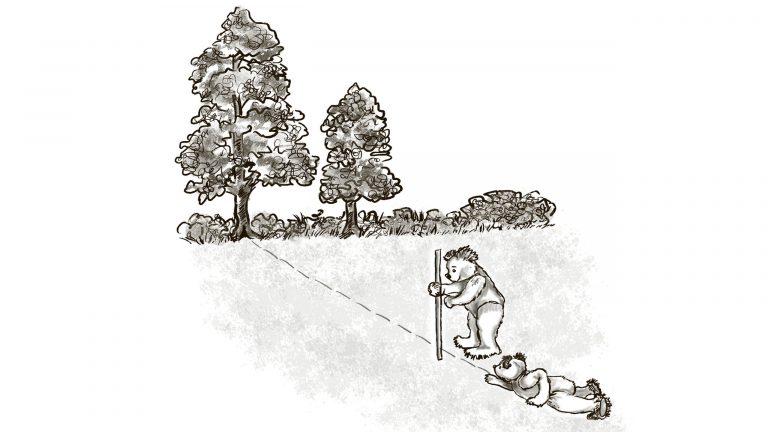
You may need a little help for this! Find a tree in some open parkland with a little space around it. Walk 27 paces from the trunk and get a friend to hold a long stick upright on the ground at the point where you stop. Take three more paces, get down on the ground, and tell your friend to mark the stick where it crosses your sight line to the tree’s top. The tree is approx. 10 times the height of the mark.
How to make a Bark Rubbing & measure the girth of a Tree to get an idea of it's age
One way of adding to your record of a tree is to take a bark rubbing. Rub the lower branches as well as trunk if you can reach safely as they often have different textures and patterns. You will need a piece of waxed or greaseproof paper, some sticky tape and a large was crayon. Tape the paper in position and rub slowly, all strokes in one direction, using the flattened side of the crayon. For an interesting result use crayon and paper of contrasting colours.
The most accurate way to work out the age of a tree is to count the annual growth rings on a stump from a tree of the same size and species as your adopted tree, but if this isn’t possible there is another way to get an approximate idea of its age. Take a long tape or piece of sting and wrap it around the girth of the trunk about 1.5m from the ground and mark off the length where it meets. The age of your tree in years is equal to approximately 2.5 times the length of your piece of sting in cms.
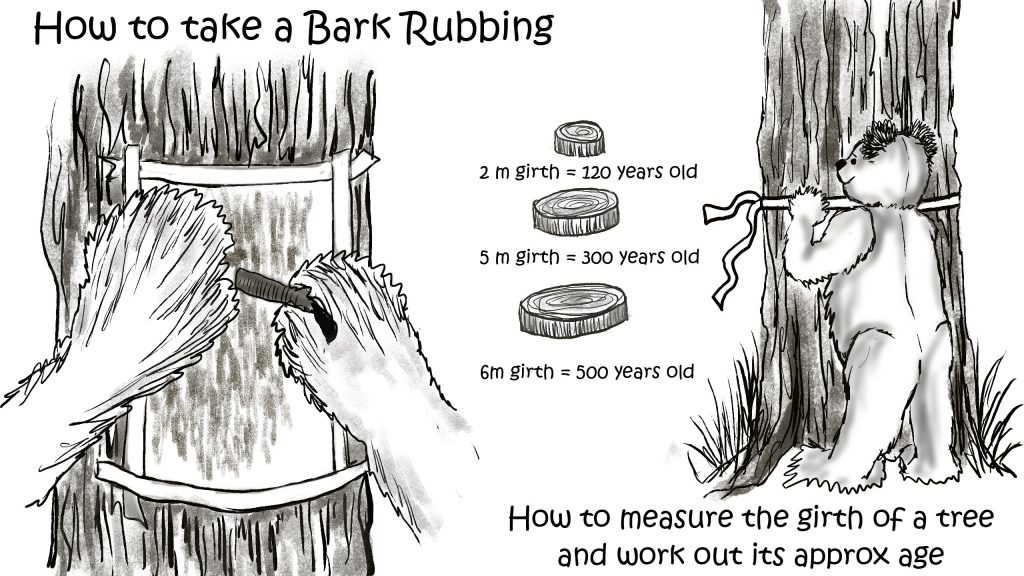

Your Billy Bear Guide to identifying Trees by their leaf shapes
